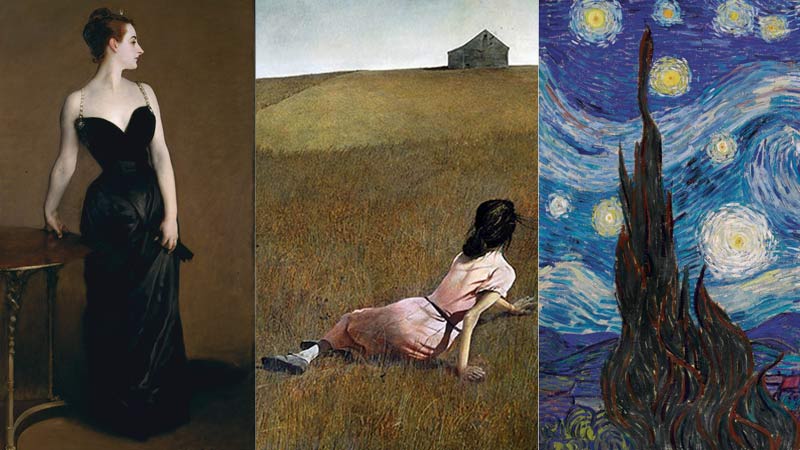
New York City stands as a beacon of artistic brilliance, home to some of the world’s most celebrated paintings.
With institutions like The Metropolitan Museum of Art and the Museum of Modern Art, the city showcases a diverse range of masterpieces that span centuries and styles.
From Van Gogh’s mesmerizing swirls in “The Starry Night” to Warhol’s iconic “Campbell’s Soup Cans,” these works not only reflect artistic innovation but also the cultural fabric of their times.
Art lovers and casual visitors alike can immerse themselves in the stories behind these masterpieces. Each painting offers a glimpse into the artist’s vision and the historical context that shaped their work.
Discovering these ten famous paintings in NYC provides an enriching experience, inviting viewers to appreciate the beauty and significance of art in one of the world’s most cities.
1. The Starry Night – Vincent van Gogh
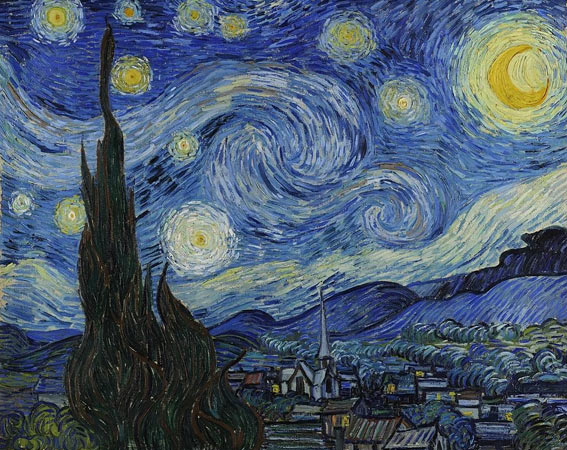
The Starry Night, painted by Vincent van Gogh in 1889, captures a dreamy night sky filled with swirling stars. This iconic piece, housed at the Museum of Modern Art (MoMA), was created during his time in a mental asylum in Saint-Rémy-de-Provence.
Van Gogh’s bold colors and emotional depth evoke feelings of isolation and wonder. The cypress tree and luminous stars symbolize both hope and dreams, inviting viewers to admire its unique blend of imagination and reality.
2. Les Demoiselles d’Avignon – Pablo Picasso

Pablo Picasso’s Les Demoiselles d’Avignon is a groundbreaking work housed at the Museum of Modern Art. Created in 1907, it features five female figures in a brothel, representing a radical departure from traditional representation.
By including sharp angles and fragmented forms, Picasso challenged artistic norms. The title references Avignon Street in Barcelona, a historic site known for its cathouses. This masterpiece not only ignited modernism but also remains a powerful commentary on sexuality and transformation in art.
3. Portrait of Madame X – John Singer Sargent

“Portrait of Madame X” is one of John Singer Sargent’s most famous works, showcased at The Metropolitan Museum of Art.
Painted in 1884, the artwork features the society beauty Virginie Amélie Avegno Gautreau. This painting caused a scandal due to its provocative style and revealing attire.
Such controversy initially hindered Sargent’s career in France, but he later gained fame in America and Britain, establishing himself as a leading portrait artist of his time.
4. Christina’s World – Andrew Wyeth

“Christina’s World,” painted in 1948, captures the poignant essence of Andrew Wyeth’s artistic vision. The artwork features Christina Olsen, Wyeth’s disabled neighbor, sprawled in a field, gazing at her farmhouse.
The stark realism evokes a sense of isolation and longing, reflecting the rural landscape of Maine. This masterpiece defies the avant-garde trends of its time, solidifying Wyeth’s status as a renegade in the art world.
It’s a powerful exploration of human resilience and emotional depth, making it a must-see in New York’s Museum of Modern Art.
5. The Persistence of Memory – Salvador Dalí

Salvador Dalí painted “The Persistence of Memory” in 1931, showcasing a surreal landscape filled with melting clocks.
This masterpiece, housed at MoMA since 1934, symbolizes the fluidity of time. Its striking elements, like the melting watches and swarming ants, provoke thoughts about decay and mortality.
Dalí’s unique style captivates viewers, inviting them to explore the boundaries of reality and dreams, making it a foundational piece of surrealism in New York’s art scene.
6. The Death of Socrates – Jacques-Louis David
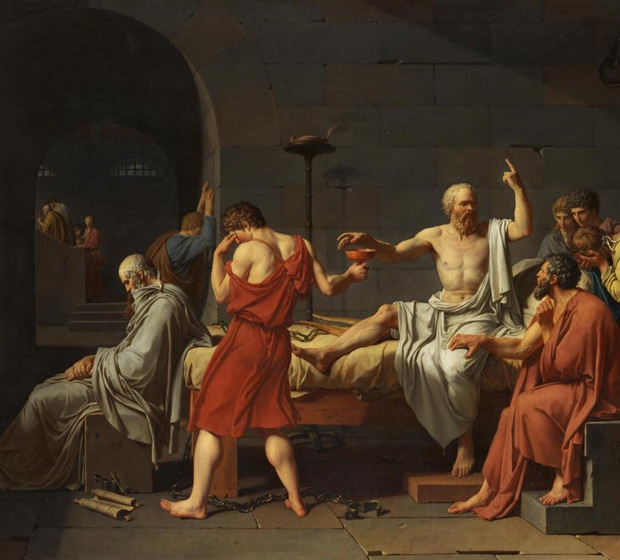
Jacques-Louis David’s “The Death of Socrates,” painted in 1787, exemplifies neoclassical artistry. It portrays Socrates resolutely choosing death over renouncing his beliefs after being sentenced in 399 BC.
The painting captures the moment of his philosophical discourse surrounded by mourning disciples, emphasizing courage and honor.
This powerful narrative serves as a reflection of David’s call for bravery among his countrymen ahead of the French Revolution, making it a must-see at The Metropolitan Museum of Art.
7. Broadway Boogie-Woogie – Piet Mondrian
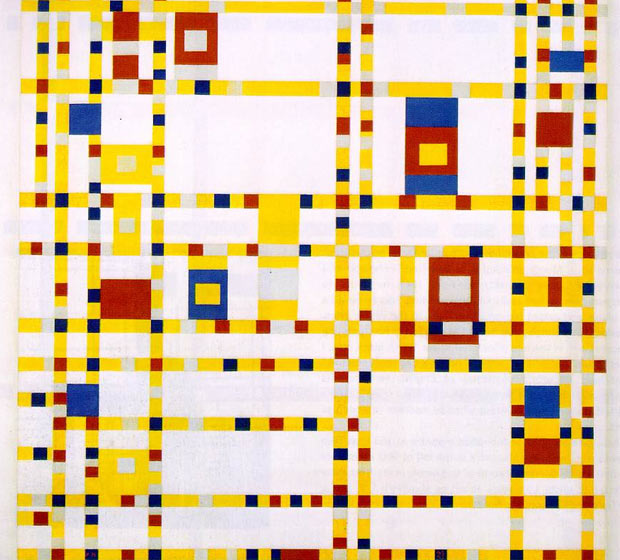
Broadway Boogie-Woogie, created by Piet Mondrian in 1942-1943, captures the energy of New York City.
It features a dynamic grid of bright colors and geometric shapes, reflecting the rhythm and movement of jazz, which inspired the artist.
Originally purchased for $800, this artwork now resides at the Museum of Modern Art. Mondrian’s use of lines symbolizes the city’s streets, portraying New York as a burgeoning superpower through the lens of his De Stijl aesthetic.
8. Drowning Girl – Roy Lichtenstein

Drowning Girl is a hallmark of the Pop Art movement, painted by Roy Lichtenstein in 1963. It captures the dramatic essence of a comic book scene, showcasing a girl in distress, surrounded by stylized waves.
Lichtenstein meticulously hand-painted the iconic dot pattern, emphasizing the emotional intensity. This piece critiques popular culture while celebrating its visual language, making it a central attraction at the Museum of Modern Art in New York.
9. Campbell’s Soup Cans – Andy Warhol

Andy Warhol’s “Campbell’s Soup Cans,” created in 1962, showcases 32 distinct flavors of Campbell’s Soup, marking a pivotal moment in Pop Art.
Each canvas displays a silkscreened image of the soup can, enhanced with hand-painted flavor names. Warhol’s repetitive, commercial style challenges traditional artistry, celebrating consumer culture.
Housed at the Museum of Modern Art, this iconic series remains a defining representation of 1960s art, inviting viewers to question the boundaries between art and commercialism.
10. The Musicians – Caravaggio
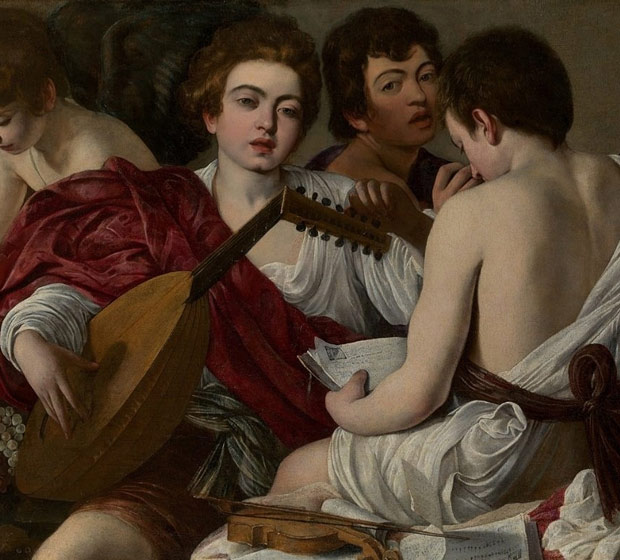
Caravaggio’s “The Musicians,” painted around 1595, showcases a group of young men engaged in music and camaraderie.
This work, housed at The Metropolitan Museum of Art, captures the nuances of human emotion through its dramatic lighting and realistic figures.
Caravaggio’s signature use of chiaroscuro enhances the composition, highlighting the intimacy of the scene.
The painting celebrates the joy of music while reflecting the artist’s mastery of storytelling within a single frame, making it a must-see in New York.






